Different types of Axolotls – Axolotl morphs / colors
Different Types of Axolotls - Axolotl / Colors Morphs / Colours
The colour of an Axolotl variation is dependent upon pigment cells called chromatophores. These cells are melanophores (containing eumelanin, a black-brown pigment), xanthophores (containing carotenoids and pteridines, yellow and reddish pigments) and iridophores (containing crystallized purines, which impart a shiny iridescence). (1) Most times people will refer to colours as morphs. To make things easier we will break them down into simple categories and more common names for you.
Basic Colors / Morphs / Colours
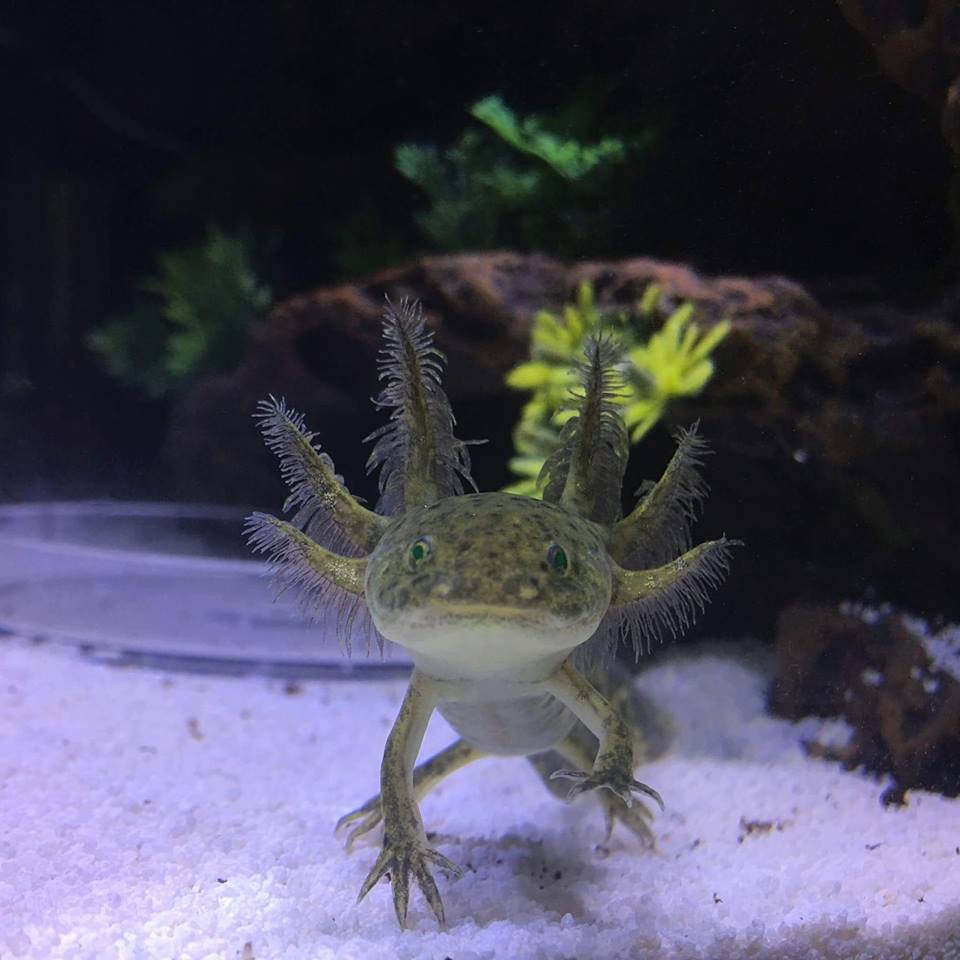
Wild Type Axolotl
A wild type axolotl is a combination of greens, browns, blacks, and just about any other colour with speckles of shiny gold iridophore pigments. This Axolotl usually has dark eyes with a shiny gold ring around the pupil and purple/gray gills.
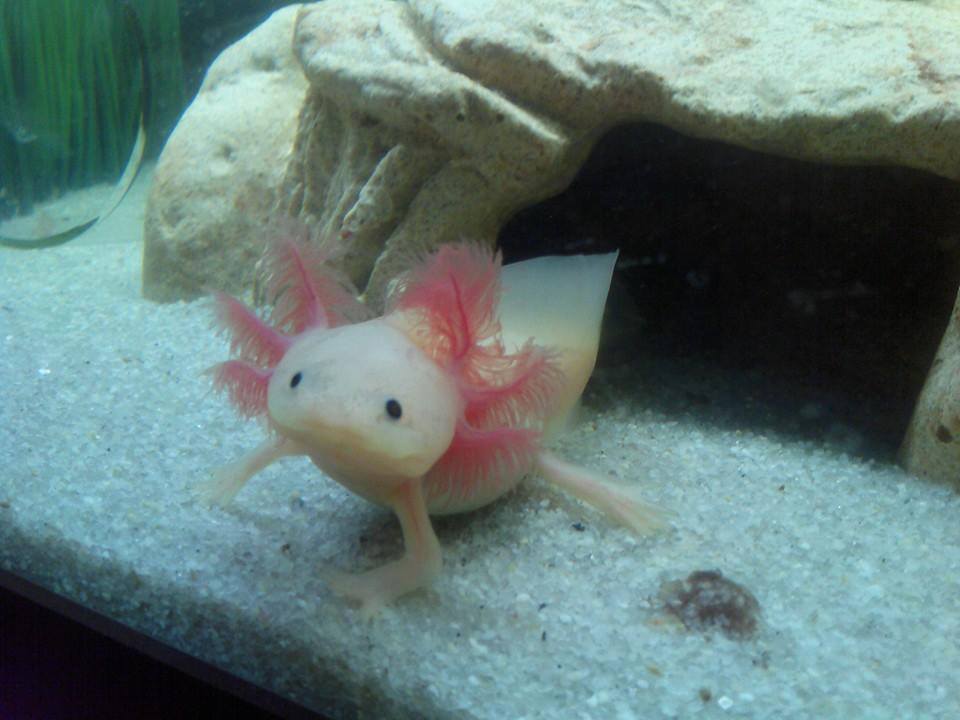
Leucistic Axolotl
This Axolotl has a white/pink body colour, dark navy/black eyes, bright red gills, may or may not develop freckles depending on the environment and genetics.
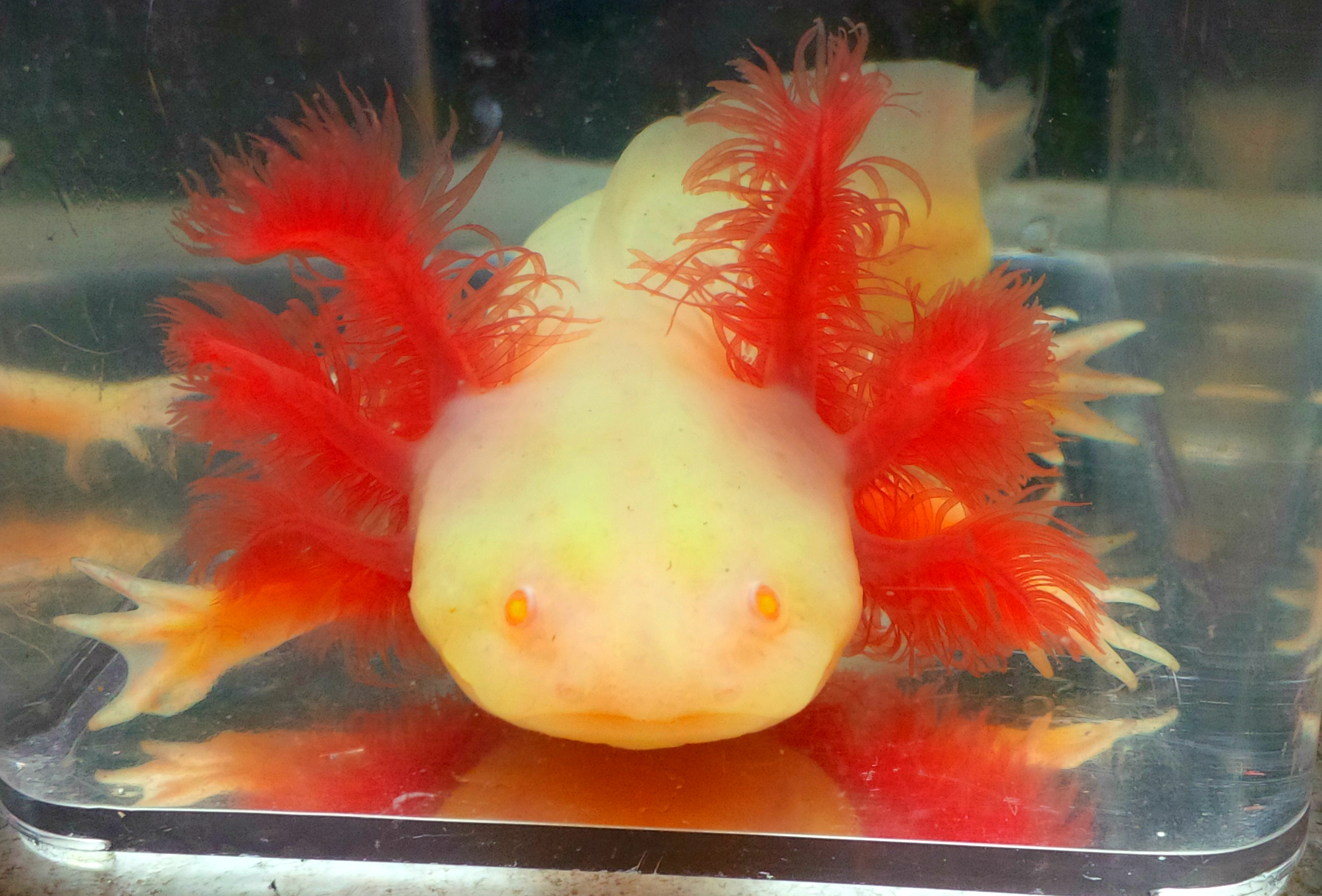
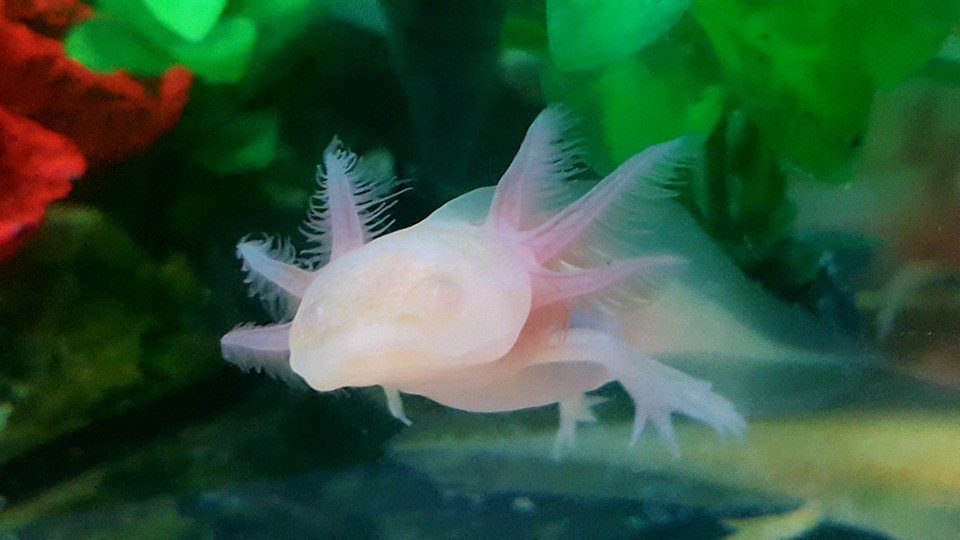
White Albino Axolotl
The Albino Axolotl has a white/pink body, has clear/red eyes, and bright red gills. This Axolotl will not develop any type of freckles or other pigmentation on the body. However, the tips of the finger will become dark and appear as if the axolotl has dirty fingertips when the Albino Axolotl is on its way to sexual maturity. The white albino comes in two forms, known only as white and xanthic; for simplicity, we will just call them White Albinos.
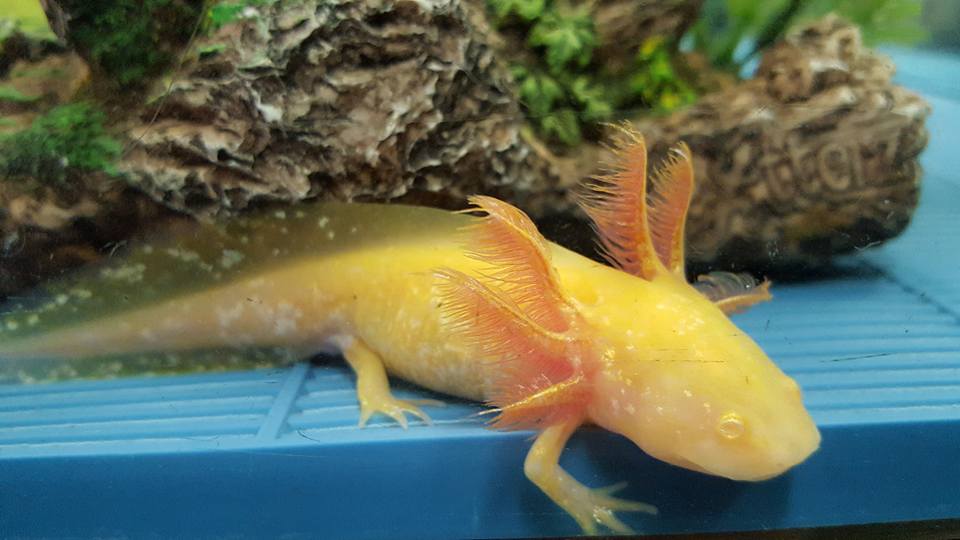
Golden Albino Axolotl
This Axolotl has a golden yellow body with shiny patches, clear eyes, with peachy coloured gills. The golden albino lacks melanophores, which is what gives it the gold appearance. Like albinos, Golden Albinos cannot have black eyes, as they are a form of albinism.
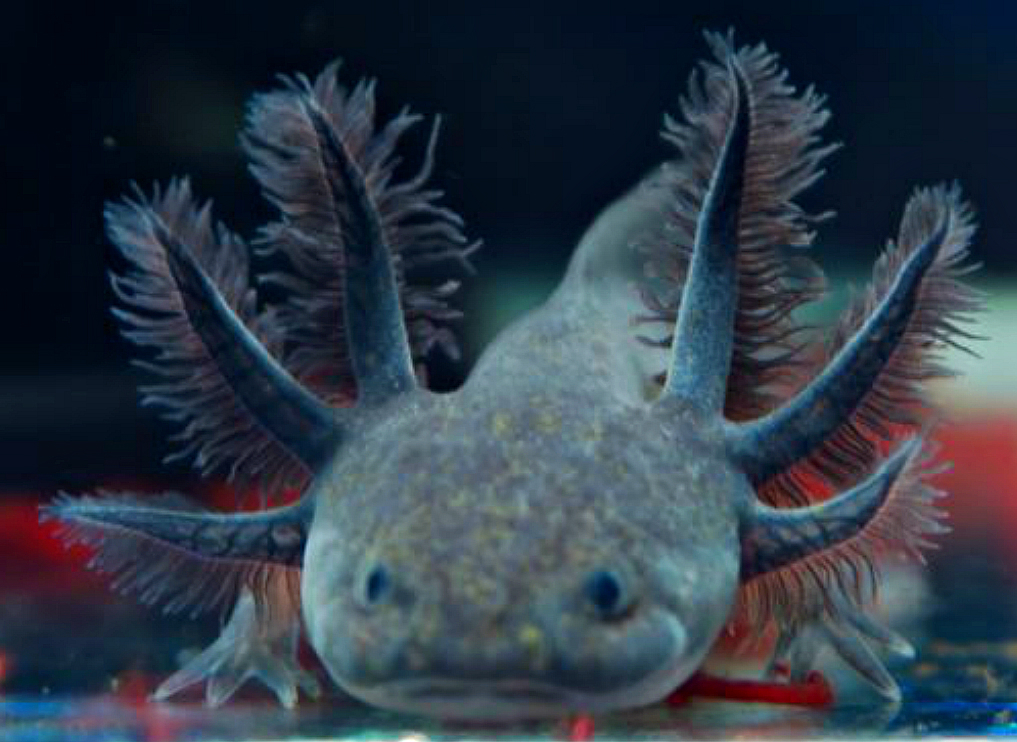
Melanoid / Black Axolotl
Melanoid looks very similar to dark Wild Types. However, this Axolotl has an increased amount of melanophores, or dark pigment, and lacks shiny pigments. This lack of shine means they don't have golden flecks or other colours throughout their bodies like a wildtype. They are one solid black colour.
Uncommon / special morphs
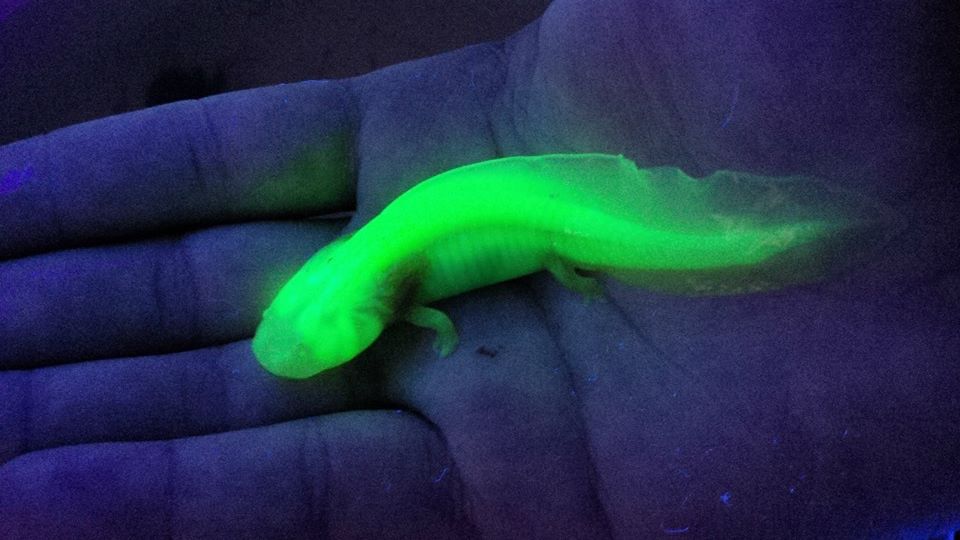
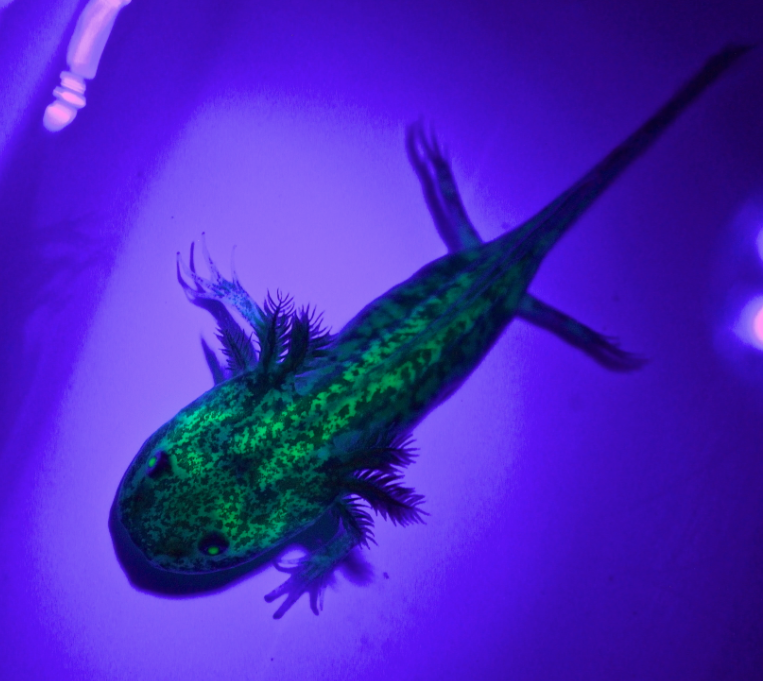
GFP (Green Fluorescent Protein)
These Axolotls are any Axolotl that has a gene known as the GFP gene. This is a genetically modified protein in their DNA that was originally introduced in a lab setting. The purpose of this was for cancer and regeneration research. This gene is now a recessive gene which means it is now passed on from generation to generation. The protein allows the Axolotl to glow vibrant green under UV or blue lighting. The less pigment the Axolotl has the brighter they will glow. The top image is a GFP Albino and the bottom is a GFP Wild Type. The gene is simply passed onto its offspring. Any Axolotl morph can be a GFP. Axolotls that contain the GFP genetic are considered to be a special morph. They are available just about everywhere.
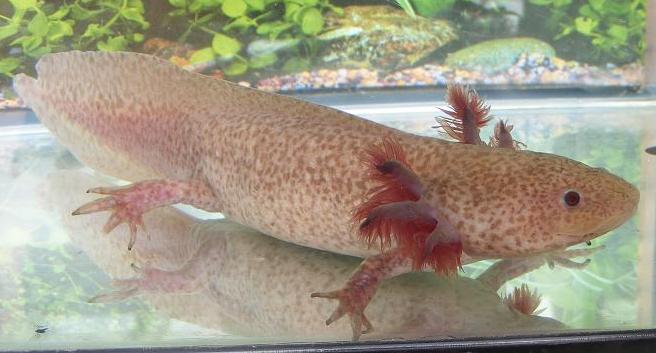
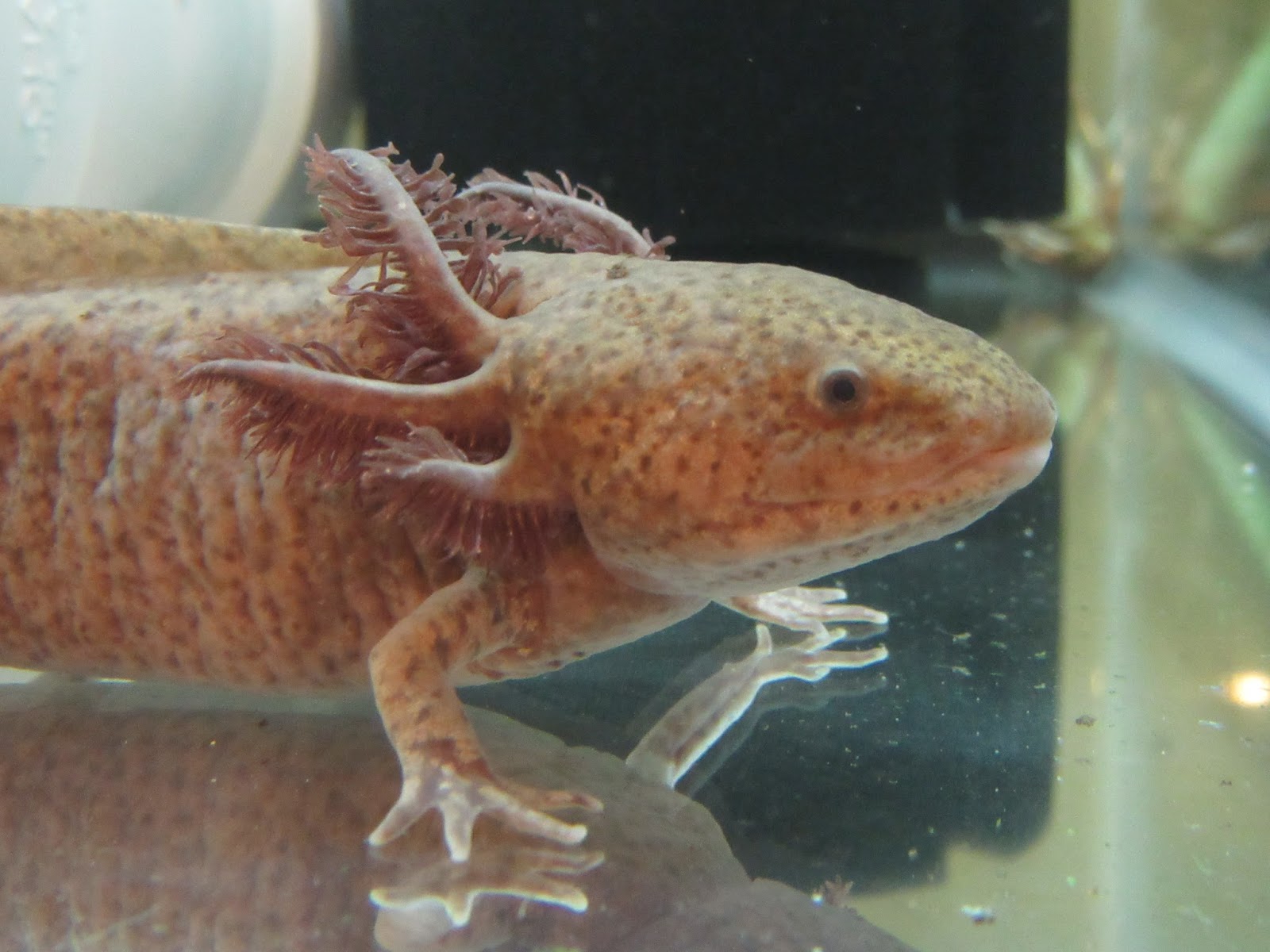
Copper Axolotl
Coppers are more common in some countries such as Germany, Australia, and the United States. Coppers are also not available in a lot of other countries such as Canada. Copper is a variety of albino, as they have red-tinted eyes and lay white eggs. They are often a light browny, pinky colour with darker brown spots. Coppers don't have any black pigments, melanophores.
Rare morphs
These morphs are extremely uncommon and probably unobtainable. You will occasionally see them pop up from time to time on the internet.
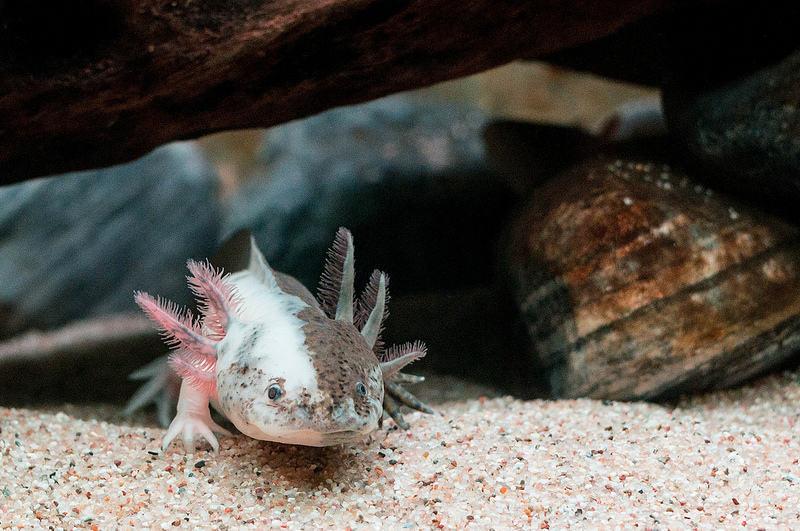
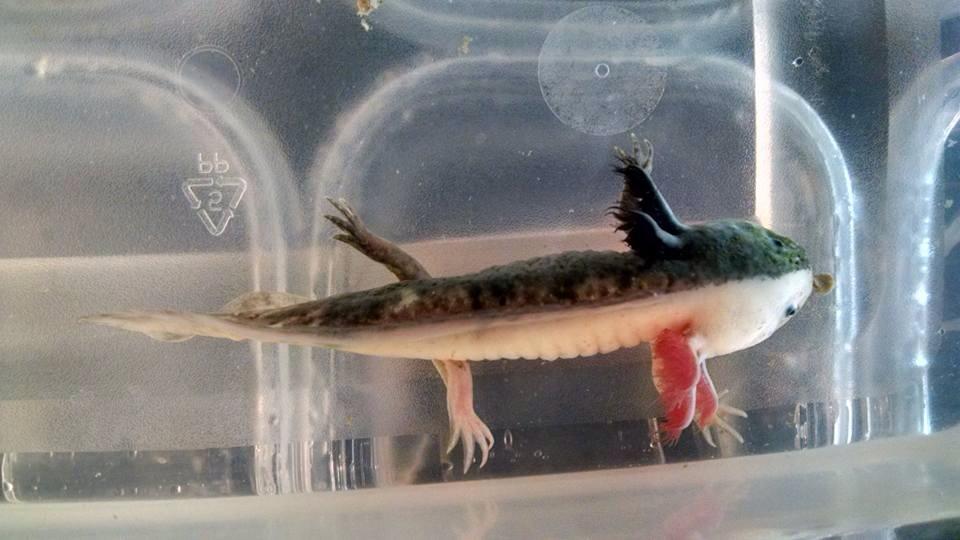
Chimera Axolotl
Chimerism in Axolotls is said to be when two eggs fuse together in development, and each side grows according to the egg it came from, often resulting in a split-down-the-middle appearance. One side can often grow at a slightly slower rate than the other.
Chimera cannot be duplicated in breeding, it is caused by an accident during development. The chances of an Axolotl being a chimera and surviving is a 0.00001% chance. There is also the argument that chimerism in Axolotls don't actually exist but are actually mosaic and the colour variation just happens to be split.
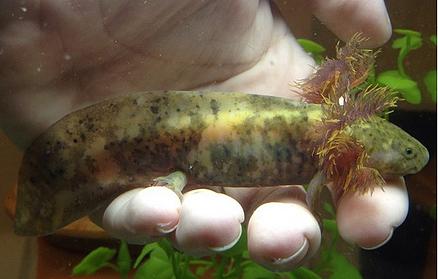
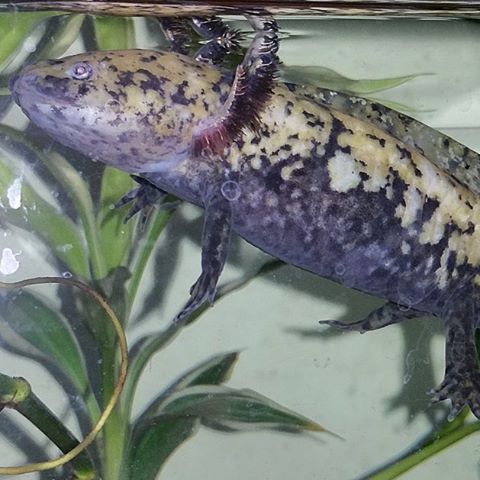
Mosaic Axolotl
Mosaicism is the result of two cells forming in development, and the axolotl comes out showing the phenotype of both cells. Like a chimera, but not an even split down the middle; The colour variation is more mixed.
Mosaic Axolotls cannot be reproduced through breeding, as it is an accident that occurs during development. Many mosaics are infertile, as they are the joining of two cells.
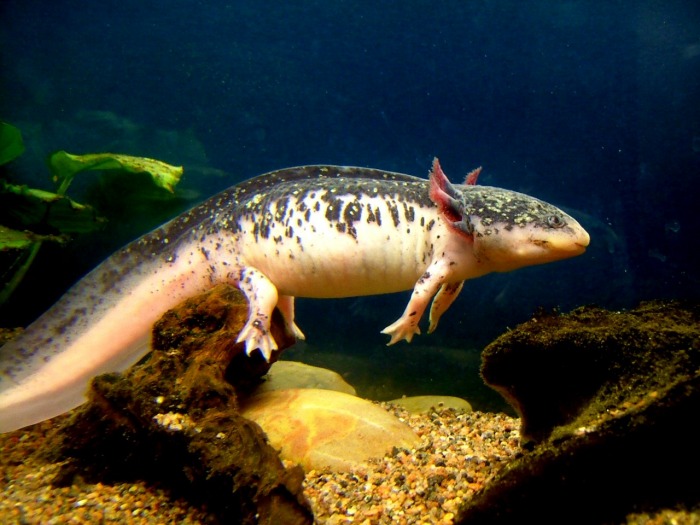
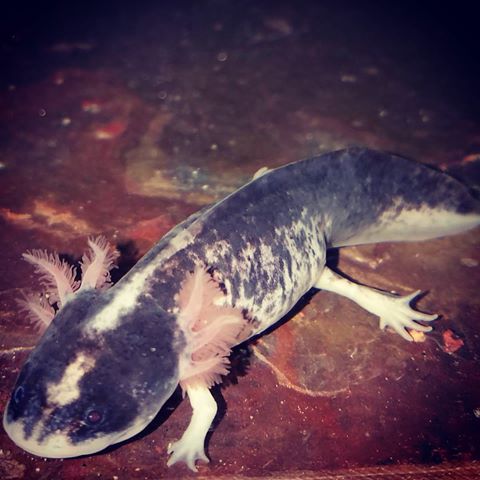
Piebald Axolotl
Piebald is when an axolotl pigmentation goes all down the body and sides, not just along with the head and top, like a leucistic. Many heavily-spotted leucistic is mistaken for piebald. The axolotl in the picture does not have much side pigmentation, but it wouldn't be unusual for it to go all down the sides. A piebald is normally significantly darker, and thicker in black spots than a spotty-leucistic.
Unlike the Chimera and Mosaic Axolotls, Piebald is genetically inheritable. Axolotls with piebald included in their genetics are somewhat common in New Zealand, so there are many very dirty-faced leucistic, but actual piebalds are rarer.
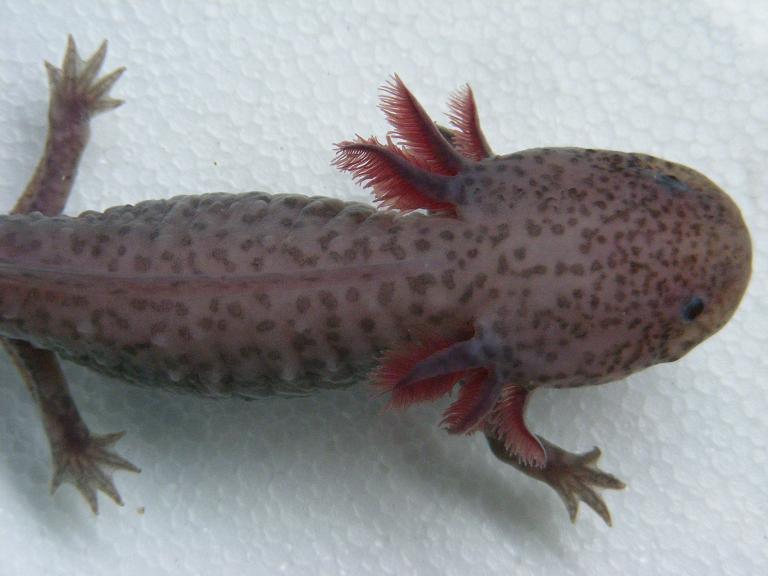
Silver Dalmatian / Lavender Axolotl
Information on this Axolotl is not well known. This Axolotl has more of a "purple" hue to them. with darker spots along the body like a Dalmatian dog. I believe this Axolotl is only available within the United States.

Enigma Axolotl
This axolotl is bred by an American hobbyist; only available within the United States. There is not much known about this Axolotl.
^^(2) (3)
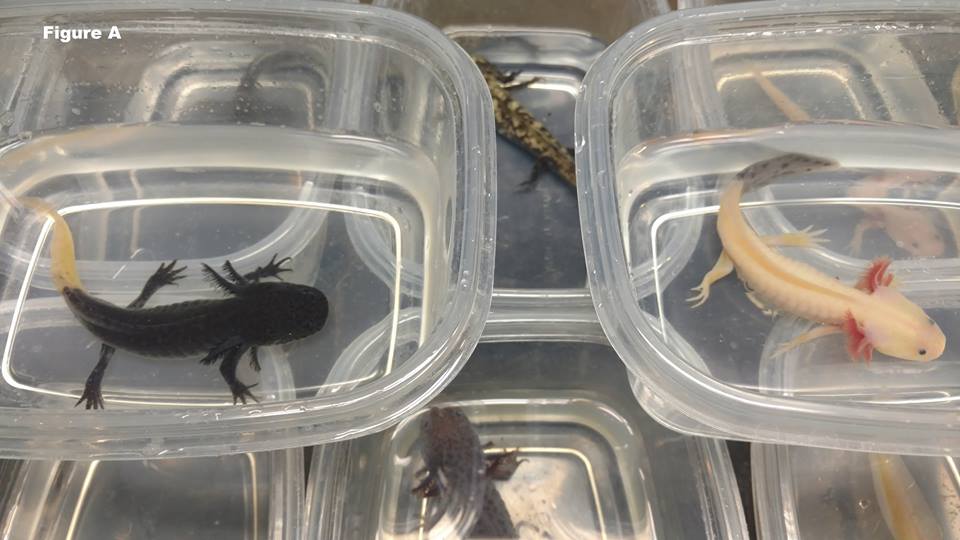
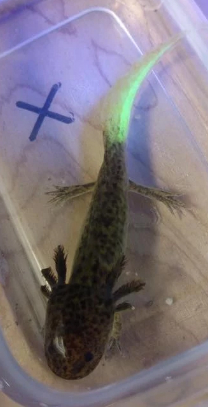
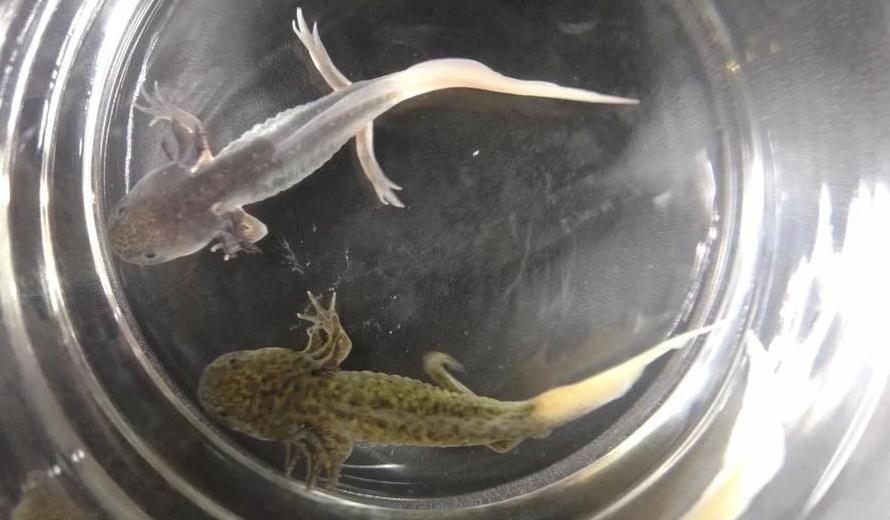
FireFly Axolotl
FireFly Axolotls are literally one of a kind. These Axolotls were produced by Lloyd Strohl II from Indiana USA in 2016. These ones of a kind Axolotls are not genetically modified. They are produced by embryonic graphing. The reason for these Axolotls being produced is because Lloyd Strohl II is conducting a preliminary investigation into the distribution and activation of melanocytes in leucistic axolotls and, in particular, in mosaics. More can be read on his facebook.
Darker Axolotls are given a lighter tale and lighter Axolotls are given a darker tale. Less than a dozen of these little guys have been produced, some of which have GFP tales.
Lloyd Strohl II will not produce these Axolotls purely for the pet/hobby industry. After his research and observation for these Axolotls are concluded he will then sells them off to the pet/hobby industry. They currently sell for over $250 USD. After his research is complete he may never produce any FireFly Axolotls again.
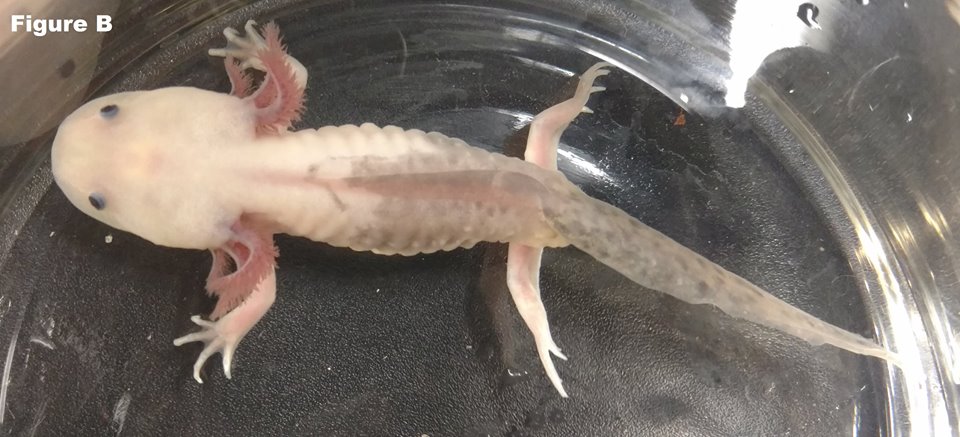
Don't actually exist
Internet trolls
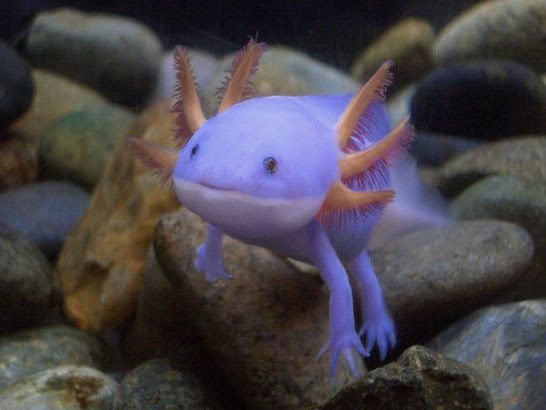
Blue Axolotl
Although most of us wish they were true, this is just a photoshopped image that fooled us all briefly back in the early 2000's.
(1) http://www.axolotl.org/genetics.htm
(2) https://axolotlcity.com/about-axolotls.html
(3) https://sillyaxolotls.wixsite.com/sillyaxolotls/colour-variations
